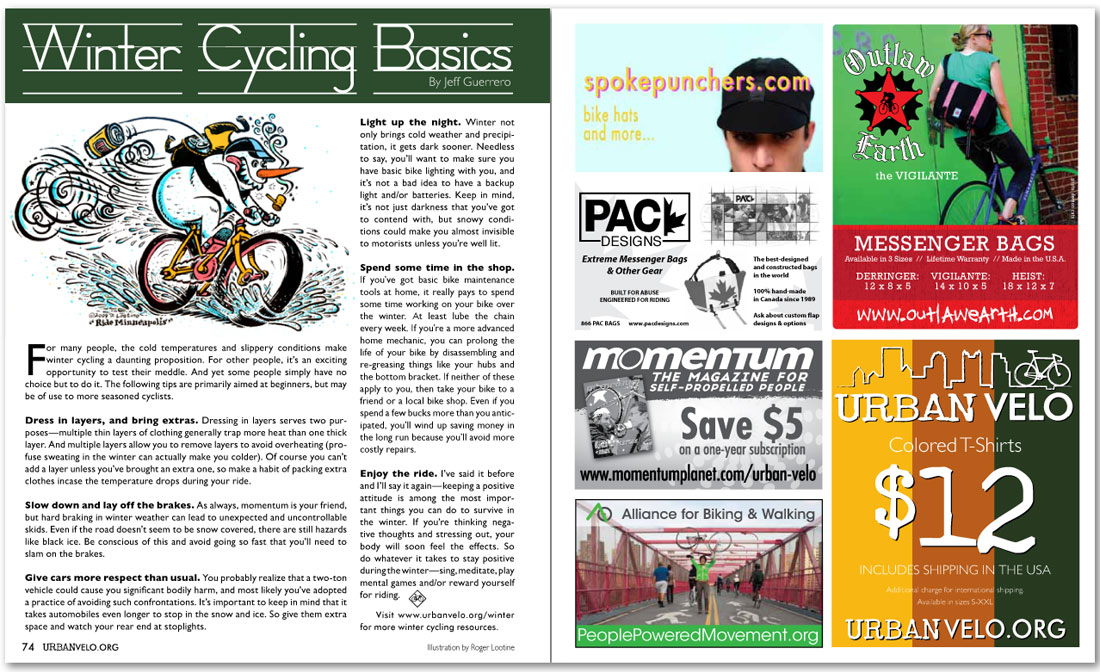


Winter Cycling Basics
By Jeff Guerrero
For many people, the cold temperatures and slippery conditions make winter cycling a daunting proposition. For other people, it’s an exciting opportunity to test their meddle. And yet some people simply have no choice but to do it. The following tips are primarily aimed at beginners, but may be of use to more seasoned cyclists.
Dress in layers, and bring extras. Dressing in layers serves two purposes—multiple thin layers of clothing generally trap more heat than one thick layer. And multiple layers allow you to remove layers to avoid overheating (profuse sweating in the winter can actually make you colder). Of course you can’t add a layer unless you’ve brought an extra one, so make a habit of packing extra clothes incase the temperature drops during your ride.
Slow down and lay off the brakes. As always, momentum is your friend, but hard braking in winter weather can lead to unexpected and uncontrollable skids. Even if the road doesn’t seem to be snow covered, there are still hazards like black ice. Be conscious of this and avoid going so fast that you’ll need to slam on the brakes.
Give cars more respect than usual. You probably realize that a two-ton vehicle could cause you significant bodily harm, and most likely you’ve adopted a practice of avoiding such confrontations. It’s important to keep in mind that it takes automobiles even longer to stop in the snow and ice. So give them extra space and watch your rear end at stoplights.
Light up the night. Winter not only brings cold weather and precipitation, it gets dark sooner. Needless to say, you’ll want to make sure you have basic bike lighting with you, and it’s not a bad idea to have a backup light and/or batteries. Keep in mind, it’s not just darkness that you’ve got to contend with, but snowy conditions could make you almost invisible to motorists unless you’re well lit.
Spend some time in the shop. If you’ve got basic bike maintenance tools at home, it really pays to spend some time working on your bike over the winter. At least lube the chain every week. If you’re a more advanced home mechanic, you can prolong the life of your bike by disassembling and re-greasing things like your hubs and the bottom bracket. If neither of these apply to you, then take your bike to a friend or a local bike shop. Even if you spend a few bucks more than you anticipated, you’ll wind up saving money in the long run because you’ll avoid more costly repairs.
Enjoy the ride. I’ve said it before and I’ll say it again—keeping a positive attitude is among the most important things you can do to survive in the winter. If you’re thinking negative thoughts and stressing out, your body will soon feel the effects. So do whatever it takes to stay positive during the winter—sing, meditate, play mental games and/or reward yourself for riding.
Visit www.urbanvelo.org/winter for more winter cycling resources.